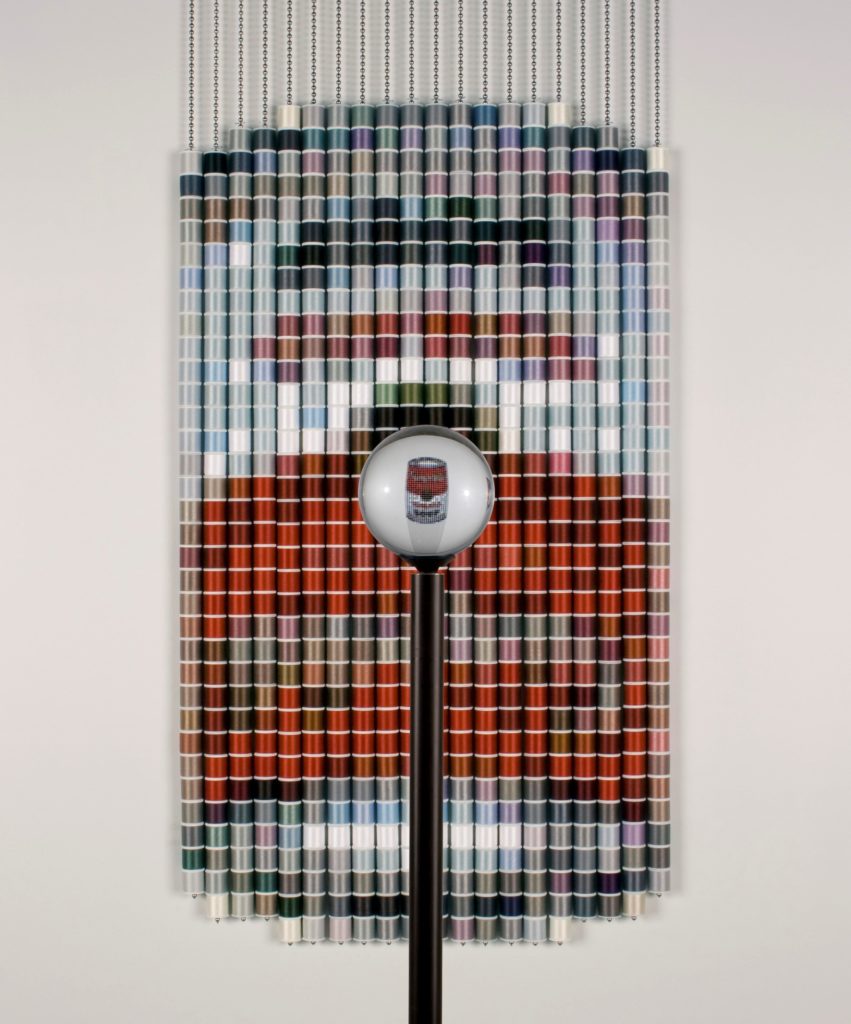How Two Artists Are Tackling the Fickle Nature of Perspective at Gilles Clement Gallery


Artnet Gallery Network

Not everything is as it seems in the new exhibition at Gilles Clement Gallery in Greenwich, Connecticut. Two artists, installation-maker Devorah Sperber and sculptor and video artist MARCK, employ a variety of optical experiments to remind us of the subjectivity of images, and their capacity for deceptiveness.
The show, “Through the Looking Glass,” brings together new and old works from the two artists. And while at first the respective artists’ styles seems disparate, the thematic similarities reveal themselves quickly.

Devorah Sperber, After Warhol (2008). Courtesy of the artist and Gilles Clement Gallery.
“We chose to pair MARCK and Sperber because both, through distinctly different mediums and unique technical artistry, address the curious nature of perception—MARCK on a conceptual and societal level, and Sperber on an optical and scientific one,” says Dianne Niklaus, the gallery’s director.
“Each employs a device that serves as the gateway to viewing their work—MARCK, the video screen, and Sperber, the acrylic viewing sphere. The interplay and engagement of the viewer with these elements in the gallery is transformative and fun—hence the show title, ‘Through the Looking Glass.’”

L: MARCK, Redline Butoh (2018). R: MARCK, 2014. Courtesy of the artist and Gilles Clement Gallery.
MARCK, based in Switzerland, contributes a number of hybridized pieces. Part video work, part sculpture, they play wryly on the relationship between form and content. For instance, in a new work titled Redline Butoh (2018), a wriggling woman floats in an abyss on the upright video screen while an automated panel connected to the monitor moves to catch her. Another work, Trash (2018), features a monitor with a metal stake driven through it, while a glitchy loop of woman plays on the screen.
Sperber takes a decidedly more analog approach. The artist, who recently relocated to Marin County, California, has hung stacks of hundreds of colored thread spools from the gallery’s ceiling. Step back and look through the acrylic orbs (literally a looking glass) she positions in front of her arrangements and you’ll see a mosaic of a canonized painting—the Mona Lisa, in one instance, Grant Wood’s American Gothic in another; then perhaps Warhol’s soup can, or Van Eyck’s iconic self-portrait.

Devorah Sperber at work. Courtesy of the artist. Photo: JenniferMay.
Sperber’s installations are more than optical trickery. The spools, a symbol of domesticity, add a feminist bent to the work. Together, they create a pixelated effect, invoking the millions and millions of times images of these paintings have been viewed and shared digitally—the predominant way we engage with art today.
“Her thread spools also evoke an underlying reference to the marginalized, feminine, and domestic art of sewing,” Niklaus says. “In this sense share a commonality with MARCK’s women, symbolically ‘framed’ by the roles, perceptions, and societal limitations they encounter, striving to move beyond tradition and norms.”

MARCK, Trash (2018). Courtesy of the artist and Gilles Clement Gallery.
“Through the Looking Glass” is on view through November 15 at Gilles Clement Gallery in Greenwich, Connecticut.
